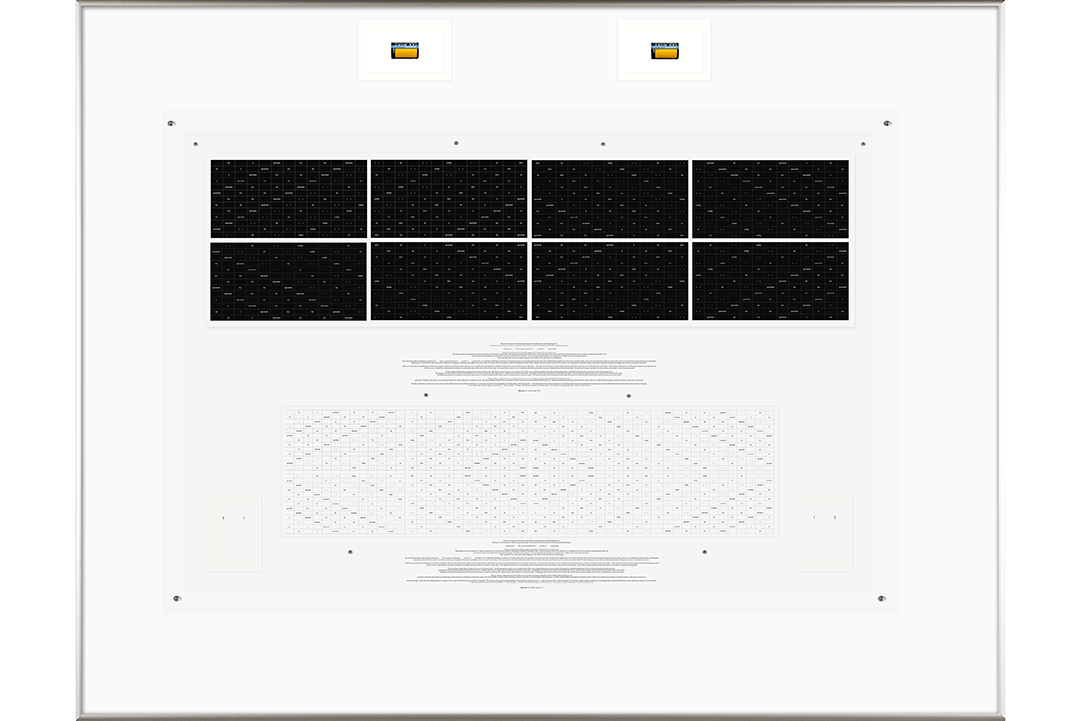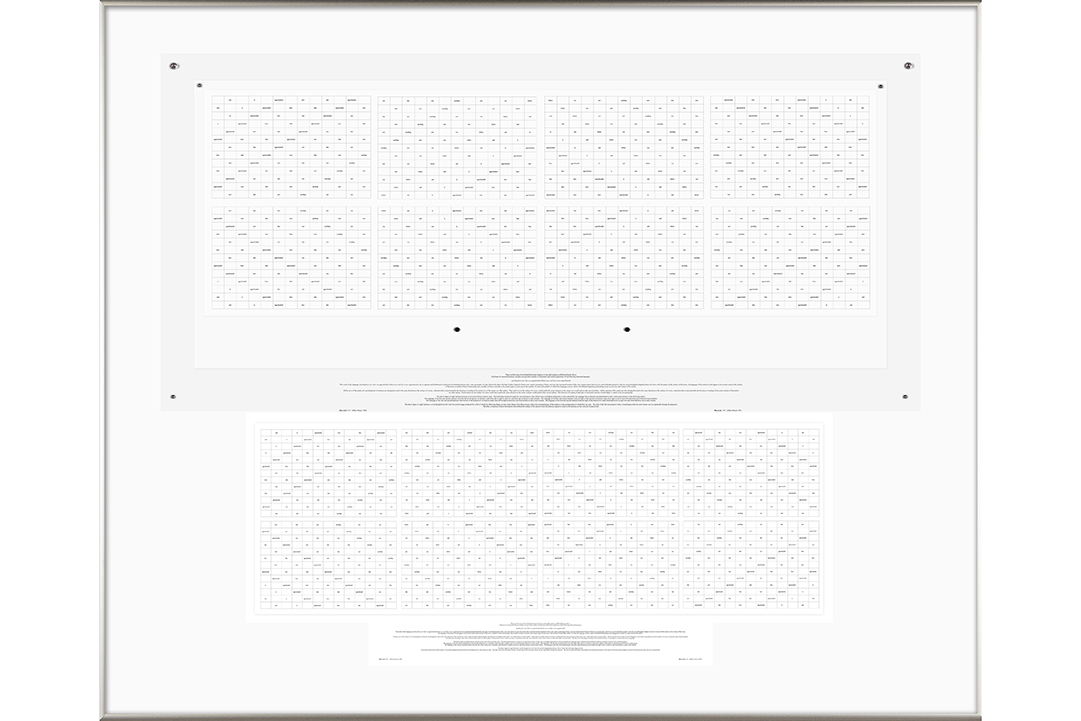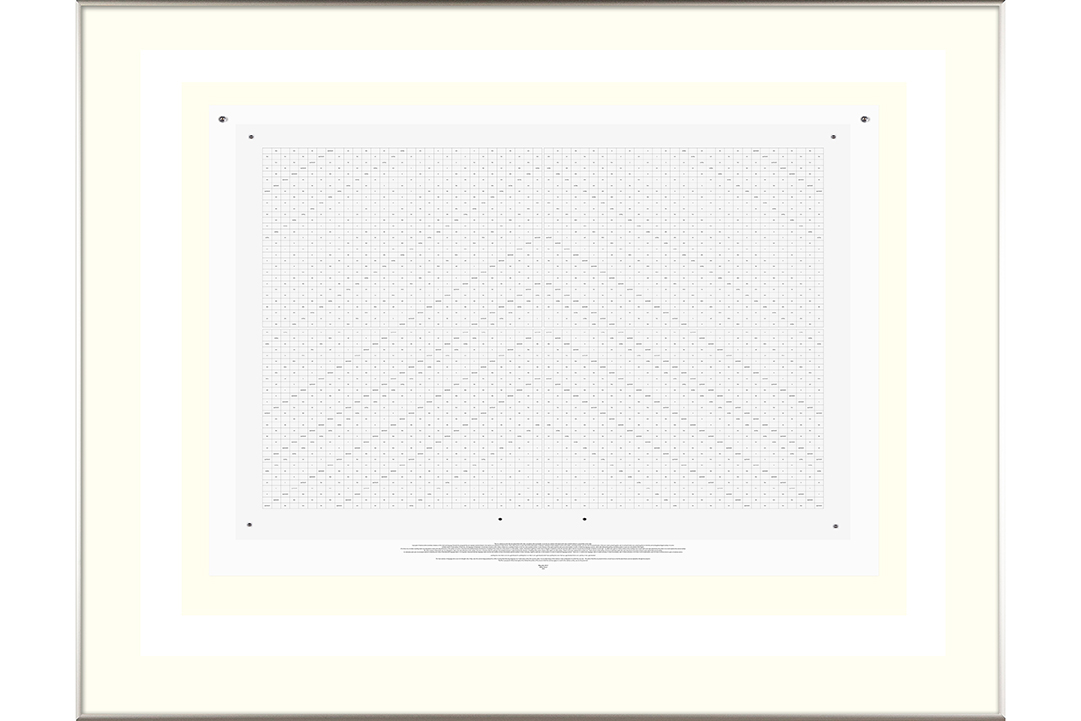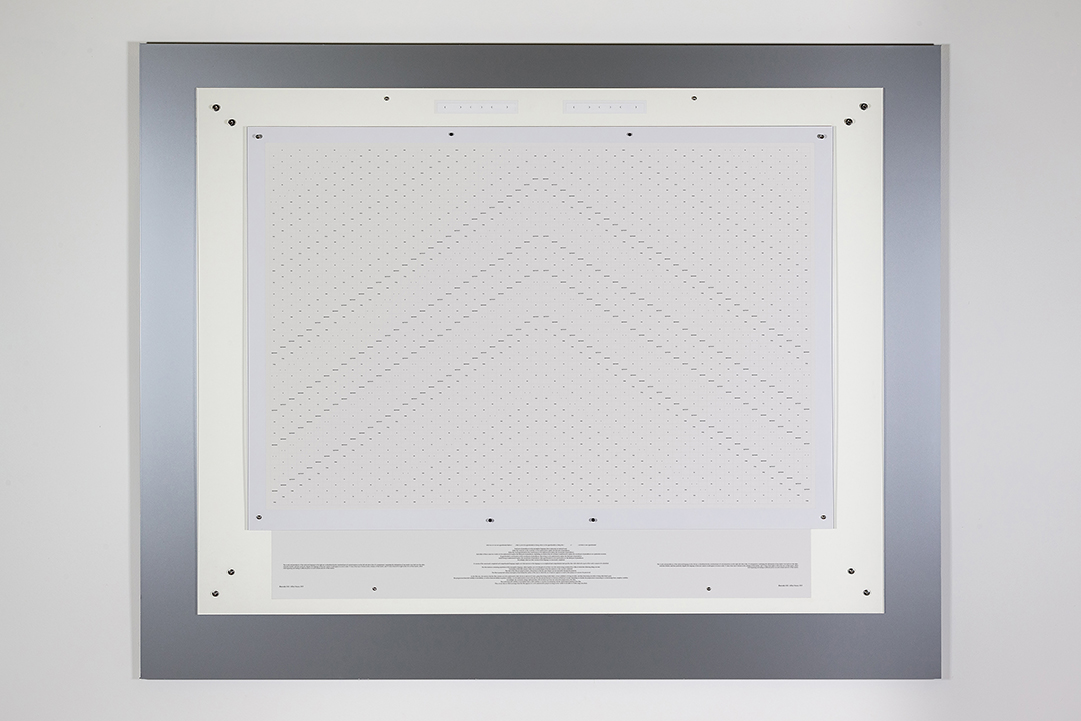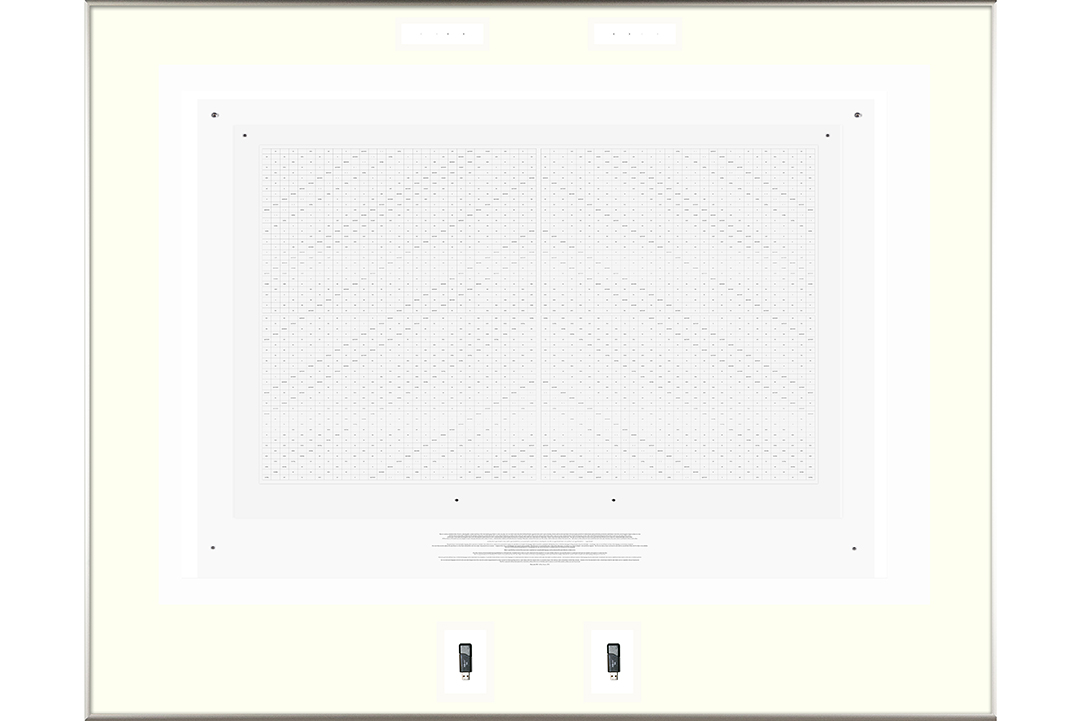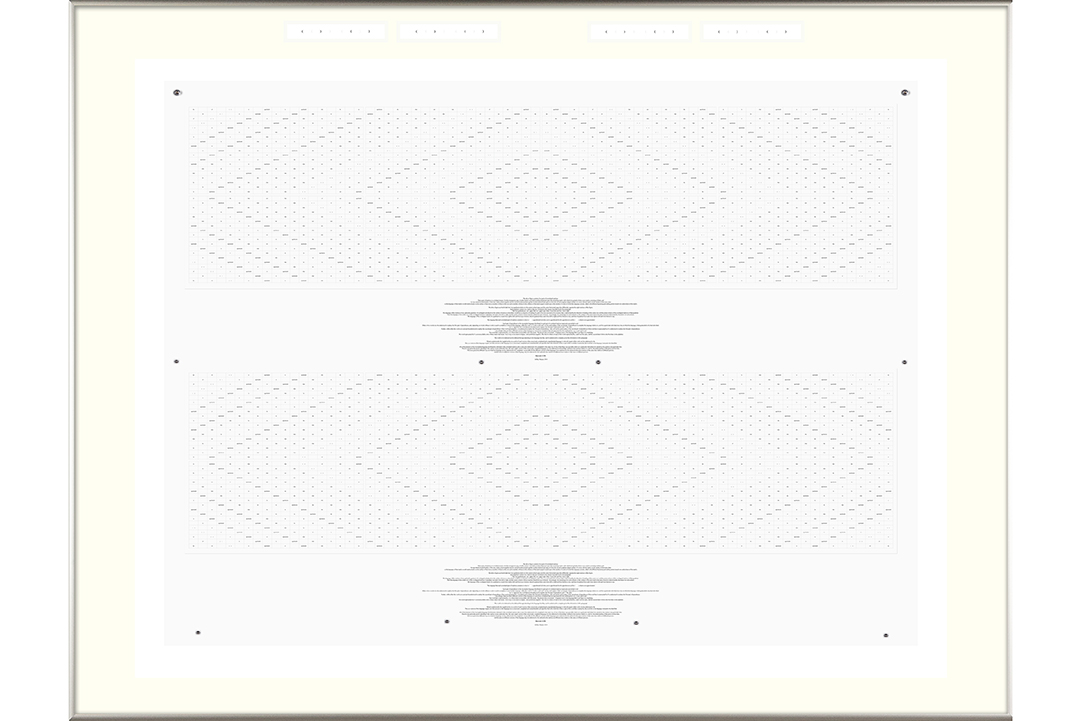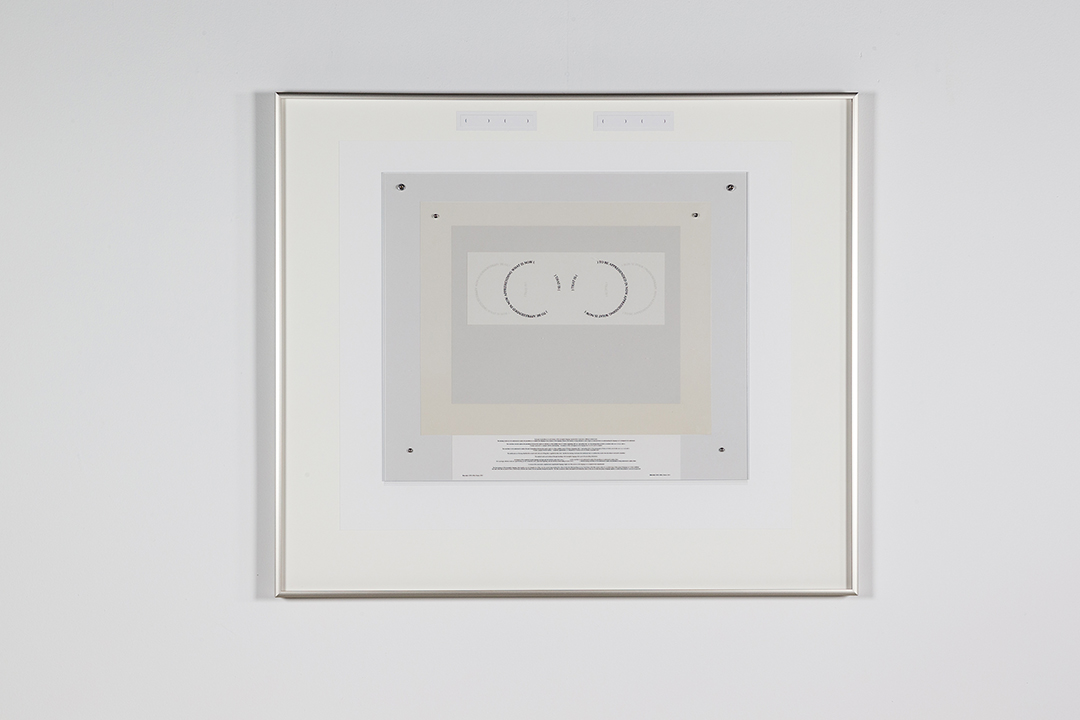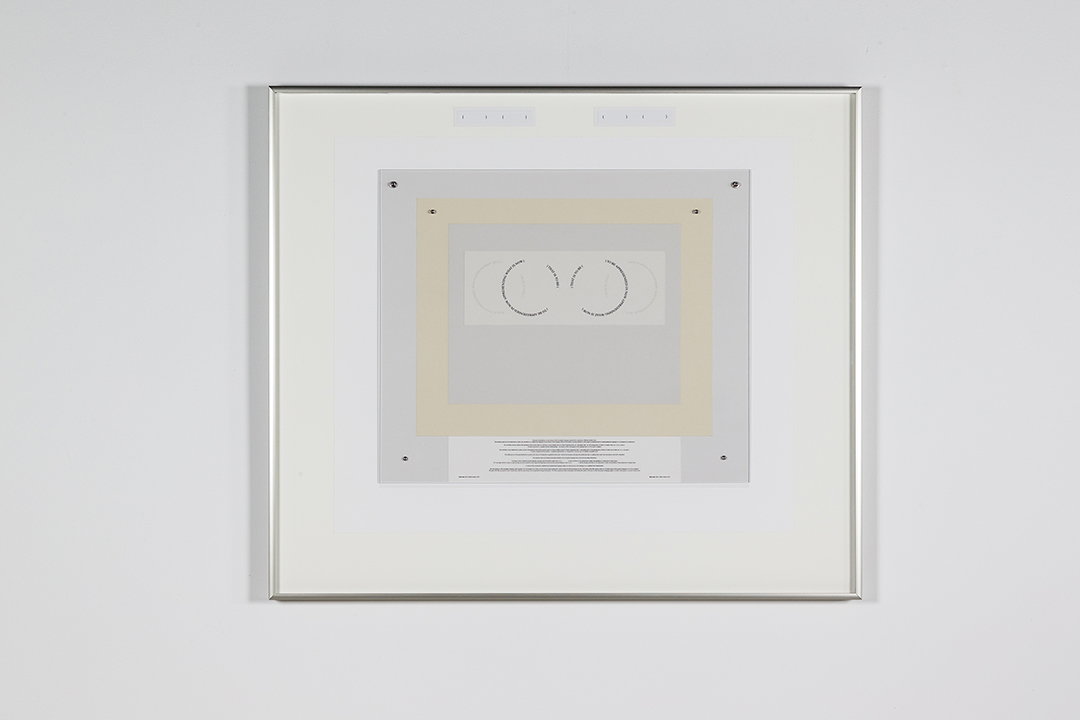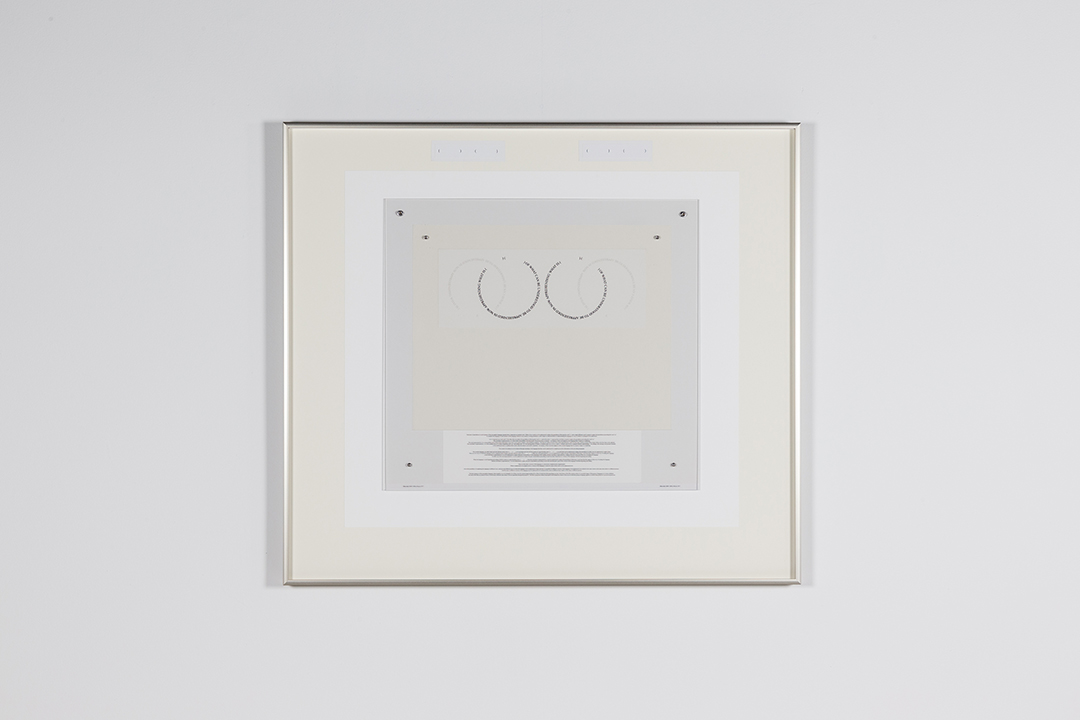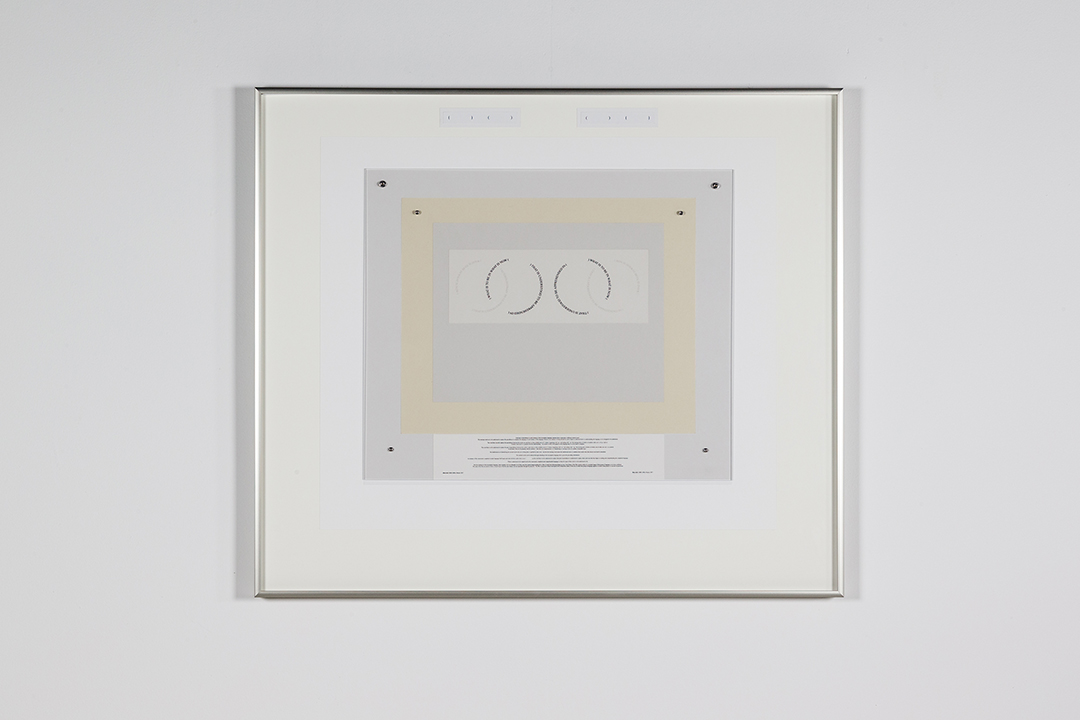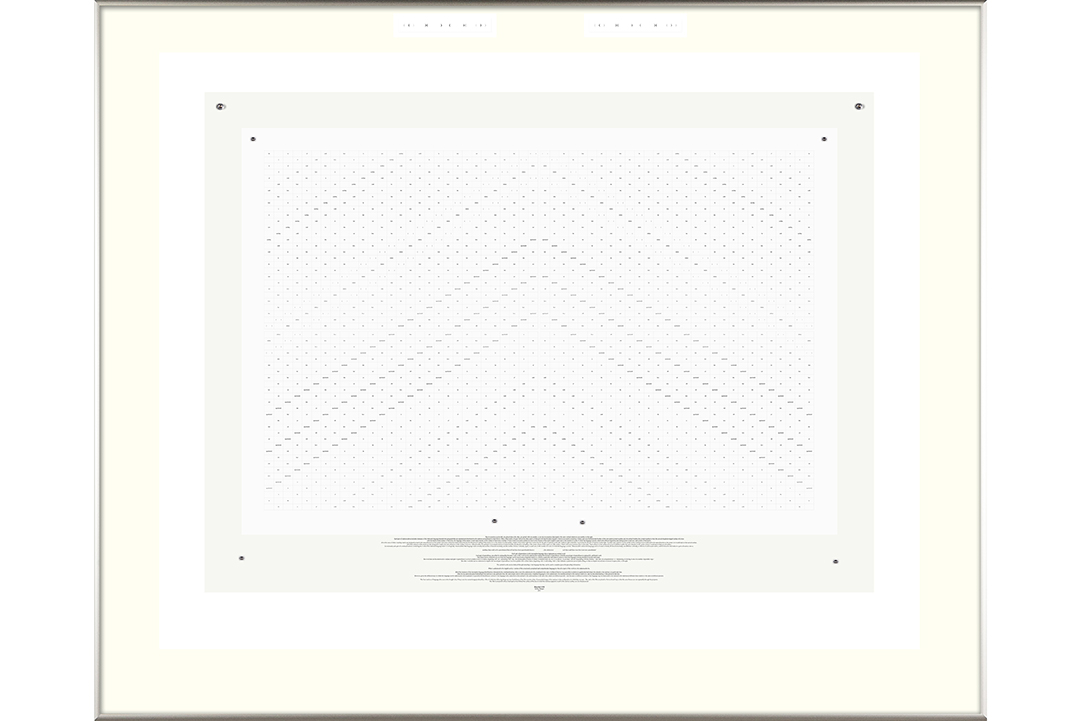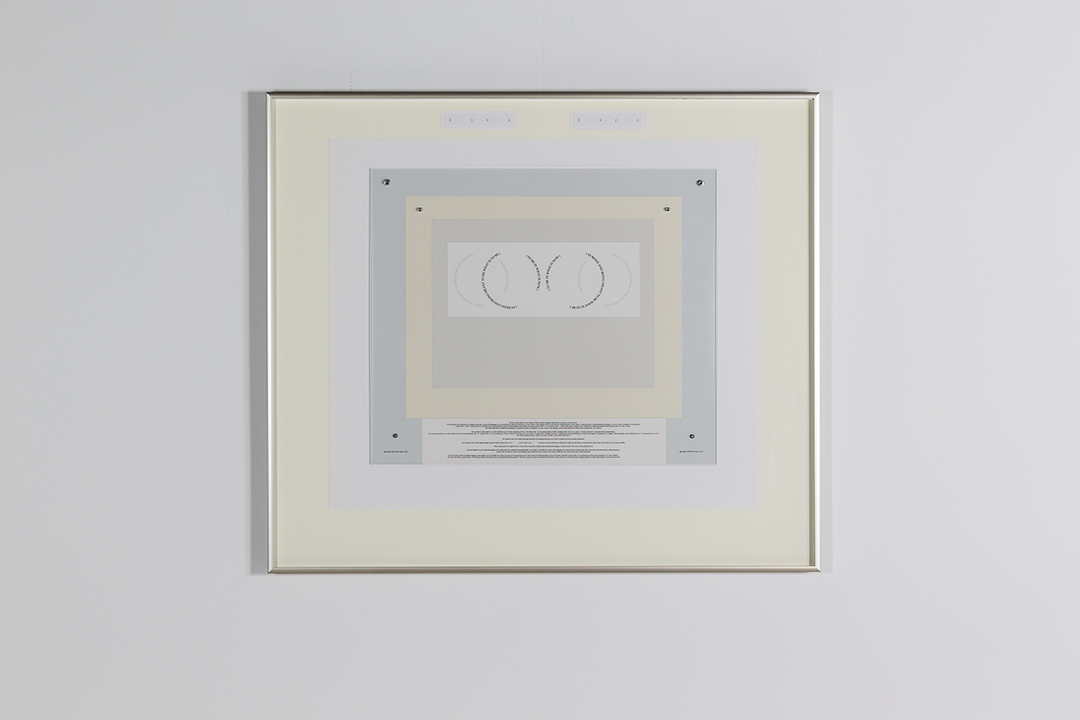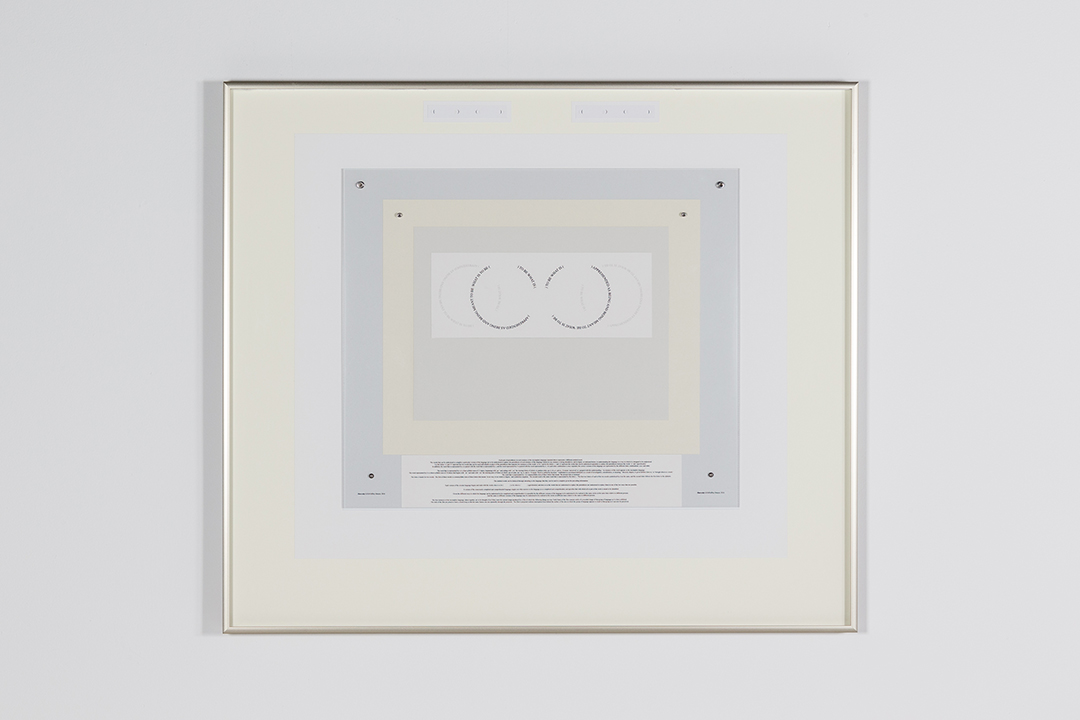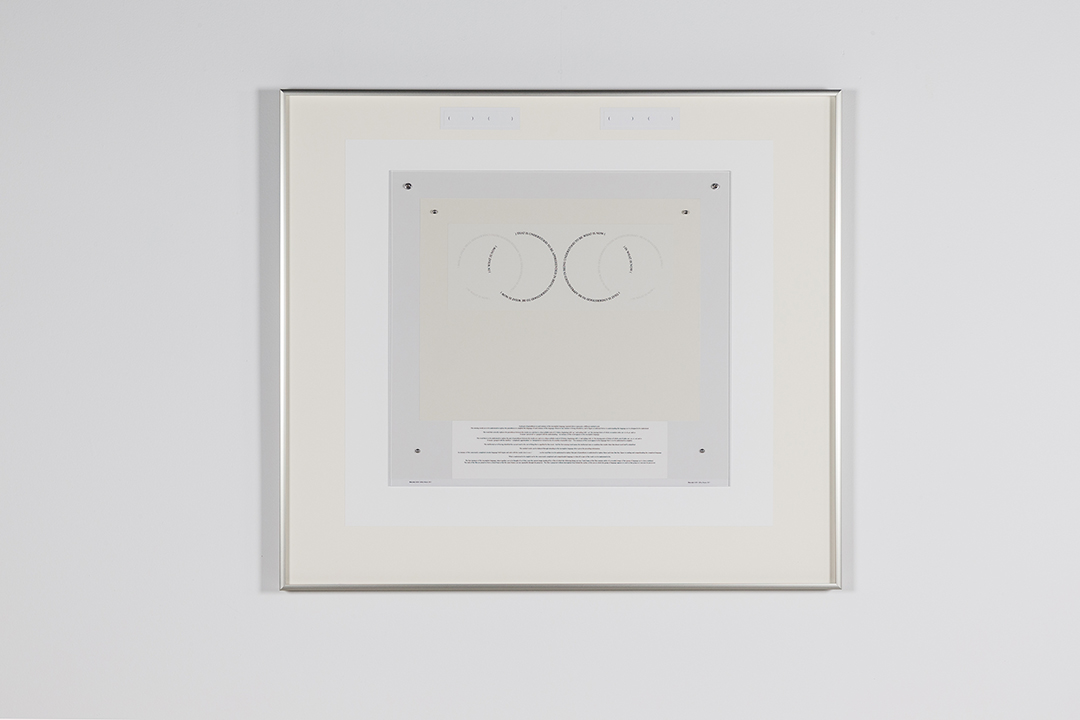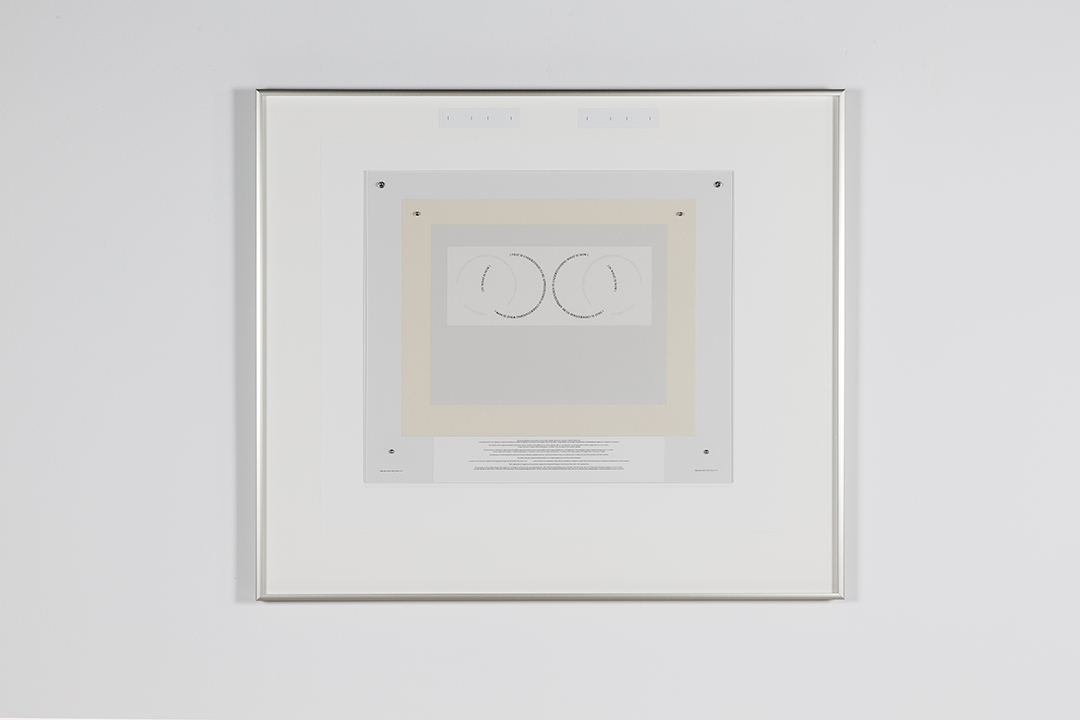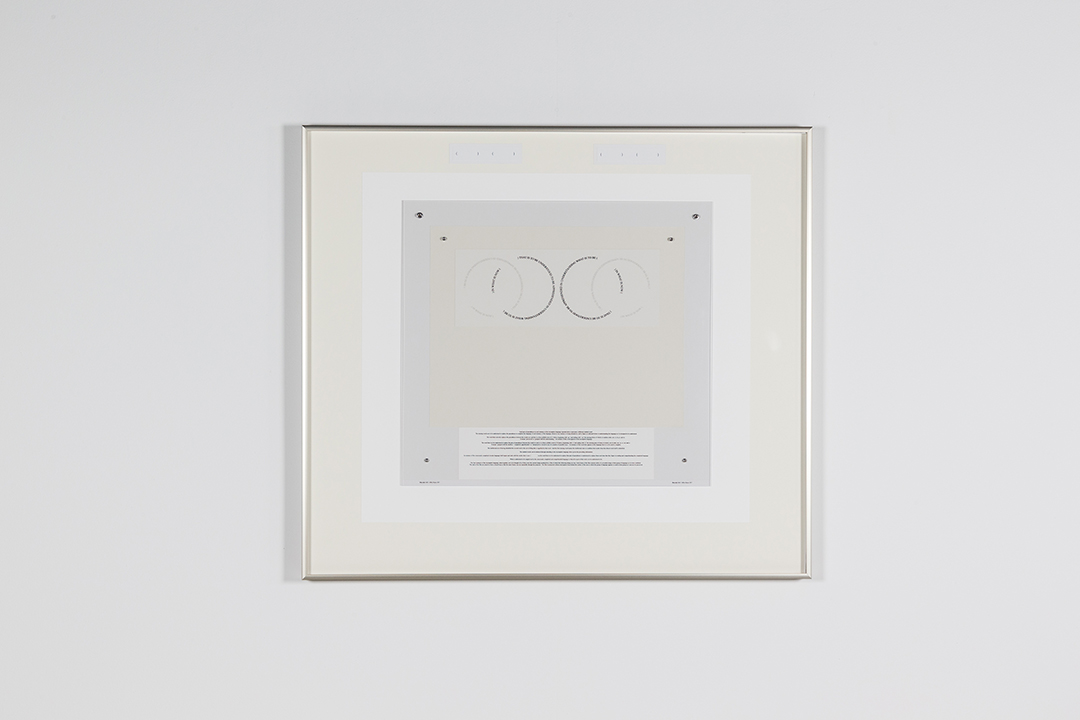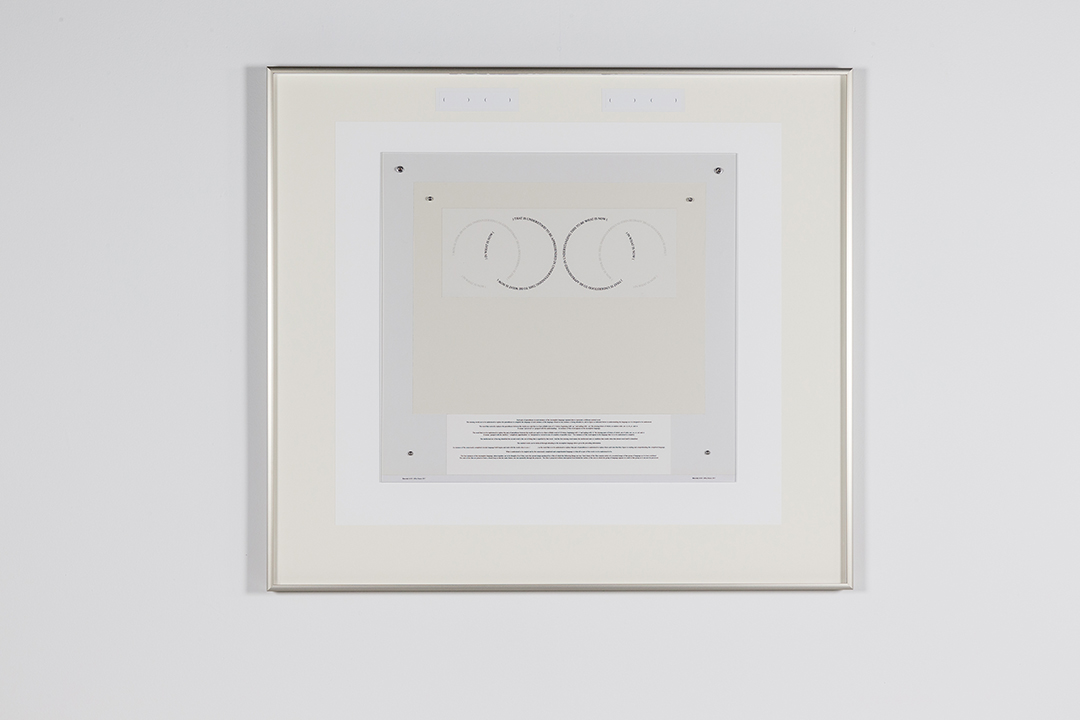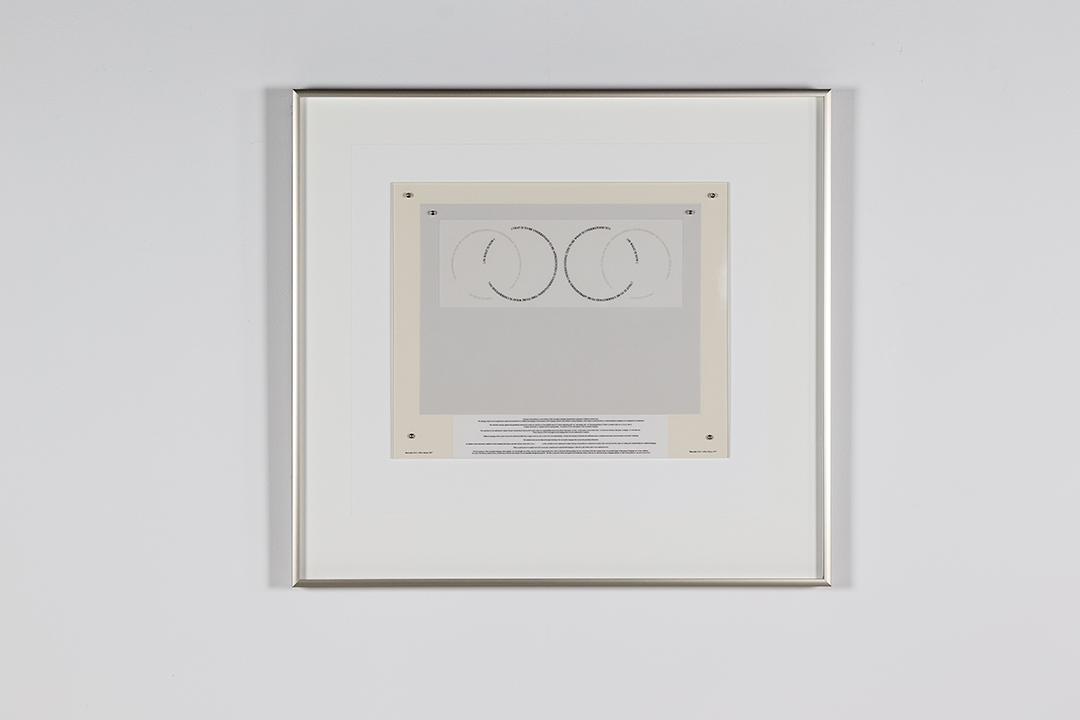Haecceity Sequence 3
From the Haecceities Series
The works of the third sequence are built upon the recognition that, although the present is permanent in the sense that all consciousness occurs, when it occurs, in the present, consciousness extends beyond the present into the past through memory, and into the future through anticipation, which itself depends on memory. The works of the third sequence also recognize that every person, including anyone attending to an artwork, or to an object on which the identity of a work depends, has a history of awareness. This means that any object of which a subject is now aware either is or is not one of which she has been previously aware. The third sequence thus notes that a fundamental point regarding the subject’s relation to the perceptual object, to a token or tokens of the specification it contains, to the meaning of the specification, and to any object specified of which it is possible to be aware, is whether or not each such object is an object that she has apprehended before now. This third sequence then deals explicitly with acts of apprehension and reapprehension as either kind of act occurs in the present, and recognizes that how an object is related to a subject, and so how she reacts to it, and what it can mean for that subject, depends in part on whether or not it has been previously apprehended. The general meanings of the words of the specifications of this sequence so relate to their apprehension that a particular object is determined in relation to a particular apprehension of the general meanings apprehended. – Essentialism and Its Objects: Identity and Abstraction in Language, Thought, and Action. (Publication forthcoming with additional commentary on the third sequence. Jeffrey Strayer, 2019.)

